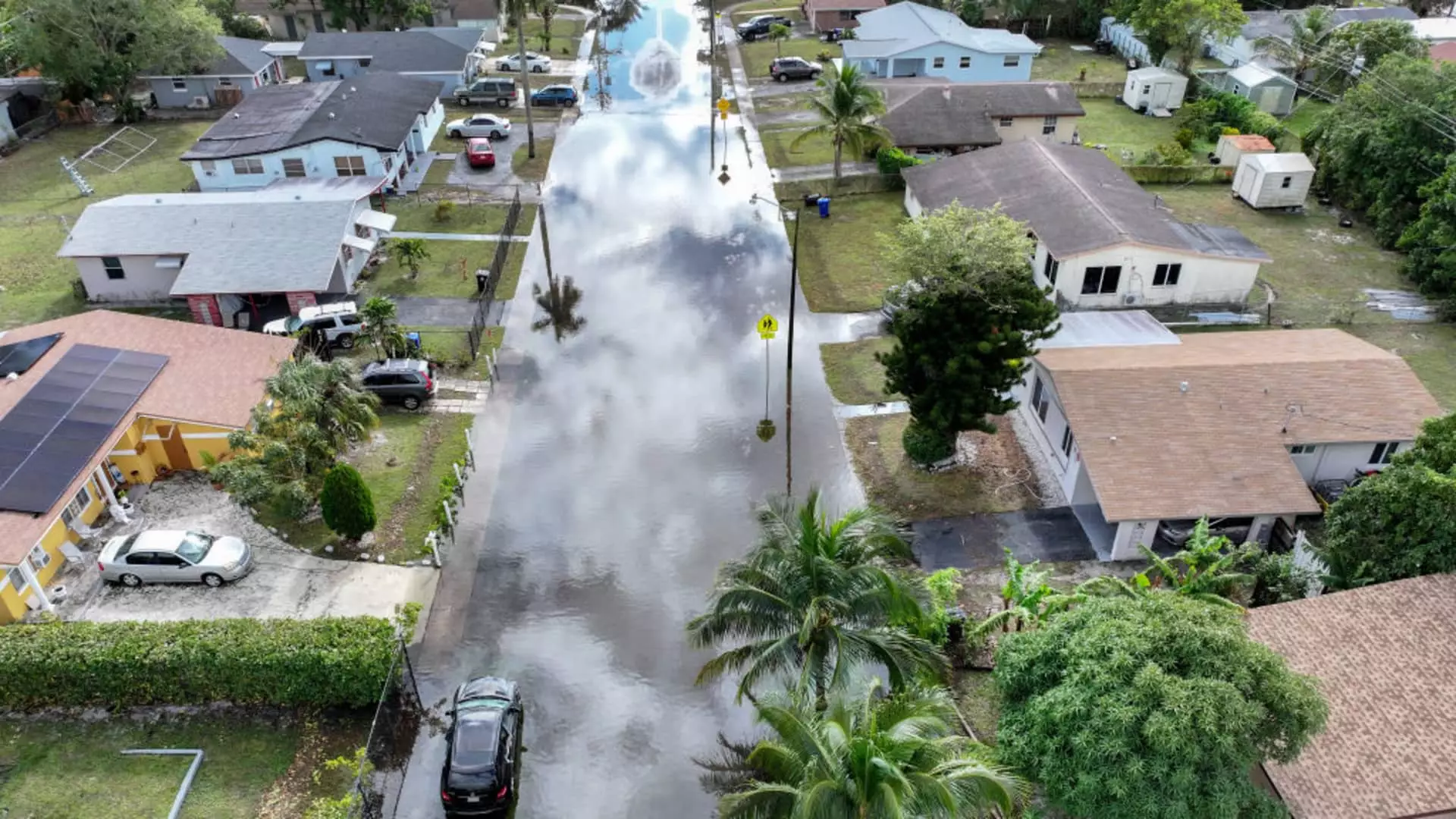With the urgency of climate change clawing at our collective conscience, the mortgage industry is beginning to wake up to a stark reality: the fragility of its financial foundations is increasingly intertwined with the unpredictable wrath of nature. This is not merely a footnote in underwriting guidelines; it is an existential threat that could redefine the entire landscape of lending. Acknowledging climate change is not just an option anymore; it’s becoming indispensable for assessing creditworthiness and structuring loans.
Imagine being a lender, pouring over the details of a client’s financial history, only to discover that lurking beneath the surface are hidden risks posed by impending environmental disasters. Insurers are retracting from high-risk regions, leaving lenders to balance on a precarious ledge. The First Street report illustrates a chilling forecast, projecting that if lenders fail to adapt their assessments to include climate-induced risks, they could face staggering losses amounting to billions.
Rethinking Credit Scoring in the Face of Disaster
The common perception of creditworthiness has been shaped by familiar metrics: income, debt levels, and collateral. Yet, the emerging reality suggests that homeowners’ engagements with climate risk must now be factored into this matrix. Areas that lie within the path of hurricane winds or wildfire hazards will likely see their credit scores fluctuating based on risk—the irony being that responsible borrowers could find themselves penalized. Elevated borrowing costs emerge as yet another punishment for living in regions deemed as attractive yet perilous.
While climate-driven mortgage foreclosures were once a niche concern, they are expected to escalate. The report emphasizes a projected surge of $1.21 billion in bank losses due to climate-related foreclosures, escalating alarmingly to $5.36 billion within a decade. Such figures ought to jolt lenders into action, making them reconsider how they assess potential borrowers in high-risk zones. It’s maddeningly clear that while these institutions have historically overlooked climate threats, their decision-making processes now need an urgent overhaul.
The Human Cost of Inaction
Beyond the ominous financial implications are the real-life ramifications facing everyday Americans. As mortgage markets flirt—however unwittingly—with climate risks, it is homeowners who bear the brunt of these decisions. Those living in vulnerable areas like Florida’s coasts are already feeling the heat; expansive increases in insurance premiums are rendering homeownership unattainable for many. Insurers, burdened by the rising tide of climate disasters, are escalating premiums and withdrawing coverage, which spirals the cycle of foreclosures further.
The report from First Street poignantly highlights how climate risk cascades beyond natural disasters—it introduces a new type of economic crisis, one that’s significantly less visible but equally consequential. Individuals who once felt secure in their homes now grapple with the burden of uncertainty. Ultimately, the decisions made by lenders today impacts entire communities, potentially transforming them into ghost towns once the financial fallout emerges.
The Role of Policy and Institutional Responsibility
The political landscape directly impacts how these issues play out at the grassroots level. With the current administration having made cuts to FEMA and other crucial agencies, claims processes are hampered just when they need to be robust and responsive. This reality complicates the ability of lenders to make informed decisions, exacerbating the already fraught relationship between climate change and mortgage markets. At a time when adaptive responses should be prioritized, the system appears to be buckling under logistical and financial constraints.
Moreover, organizations like Fannie Mae need to be at the forefront, not merely as observers in this climate crisis but as active participants in fostering a new paradigm of lending. They must introduce models that consider anticipated climate impacts, facilitating an environment where borrowers are not unjustly penalized for living in risk-prone regions. Without interventional policy at this level, real estate markets may very well face a reckoning that could upend countless lives.
Confronting the Future
While the mortgage industry is at a critical juncture, now is the time for comprehensive strategic reforms that include environmental sustainability in lending practices. Ignoring climate risks is no longer an option; the foundational structure of borrowing and lending must evolve to accommodate a reality where natural disasters are no longer anomalies but rather expected events.
Climate change is not merely a concern over distant futures; it is an immediate threat that demands a robust response from financial institutions, policymakers, and communities alike. The integration of climate risk into credit assessments is only the beginning. The urgency to adapt can no longer be viewed through the lens of aversion; it must serve as the catalyst for change, redefining our values as we navigate this new world shaped by instability and unpredictability. The stakes could not be higher.

